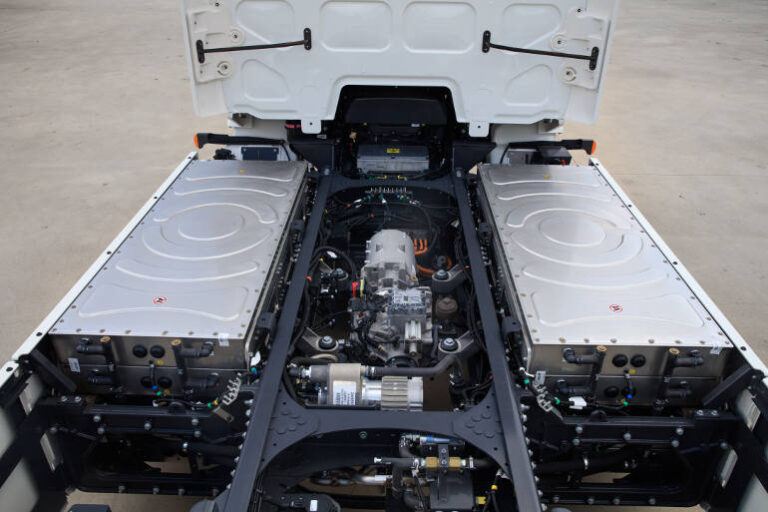Alina Dini, director energy, climate and circular economy at Deloitte hosted a webinar in November titled “Level Up EVs in 2023: What do Australia & NZ need?”
She was wearing her cap as lead of the Australia and NZ chapter of the professional association Women of Electric Vehicles, an association of women working in the electric vehicle sector globally. It was founded by a group of women in the US and has expanded to a number of chapters in capital cities in the US, Canada and in 2021 in Australia and New Zealand.
All men are welcome to the group and one of the panel of speakers was Paul Illmer, vice president emerging technology business development Volvo Trucks Australia.
“Customer orders/inquiry completely exceeded expectations,” Illmer said, adding, “What we’re doing at the moment is really trying to get the orders that we’ve got, and get those trucks on the road. Then, it’s also about preparing the market for the launch of the heavy duty range next year — a really exciting space.”
Illmer said 2023 will be all about providing proof to the market that the electric truck is here. “They’re not something that sits around the corner. They’re not science experiments. Also in the workshops, we’re training our techs.”
Illmer said the smaller trucks are performing well and current regulations aren’t a real hurdle. But they are for heavier vehicles, the so-called prime movers.
“The challenge that we have is probably about a 44-tonne single trailer type truck that would tow deliveries for StarTrack or Woolworths. The batteries are very heavy, they’re located towards the front of the vehicle. Australia has a very archaic and old front axle weight mass law,” explained Illmer.
So a focus for many people in 2023 is going to be driving policy change around this issue.
Kathy Schluter, group manager for sales and customer experience, at NZ largest commercial truck distributor Keith Andrews NZ (brands include Freightliner, Mercedes Benz and Fuso) said, “We have a number of zero emission trucks coming through over the next decade. So it’s a really exciting space to be in.”
Schluter acknowledged NZ government policy had been more proactive for electric transport compared with Australia to date, but she added there was still a lot to be worked out.
“From a truck point of view, we’re probably still a long way off.” She said charging infrastructure had focussed on serving passenger vehicles and there were spots around the country where a truck couldn’t be accommodated.
“There’s stuff like that where we’re still miles behind.” She said there was work to be done to change NZ policies and regulations around weights on axles which affect heavy vehicles in particular. “That’s one of our tasks this year … to keep on working with associations to keep on influencing government around what needs to change when EVs have a heavier weight.”
Samantha Johnson, managing director of Polestar Australia, said after launching the Polestar 2 EV into the Australian market in late 2021 they had 1,000 cars on the road now as at the end of November.
Johnson is formerly of Volvo, which is owned by Geely, the same group that owns Polestar. Johnson said the big thing to watch in 2023 is going to be the Federal Government’s national electric vehicle strategy, which is going to cover energy infrastructure, fuel efficiency standards, demand-side incentives and everything in between. “We’ve got a lot of catching up to do. But it’s great to see that the government is really listening, and will do something. For us at Polestar that really means we’ve got more demand than what we can supply at the moment.
“We will be able to fight for the supply [from headquarters] if we’ve got the right policies in place.” She said other exciting milestones on her 2023 agenda will be the launch of the Polestar SUV and the opening of a flagship retail showroom at Chadstone, Melbourne.
Claire Painter, head of business development, at Jet Charge, said the company has been in Australia and NZ for 10 years now. It supports OEMs bringing vehicles to market and their customers in getting charging installed in their homes and businesses. Now they’re getting ready for the next wave — charging EV trucks.
“We’ve seen every type of EV charging project now and we’re excited about what the next phase is in Australia and New Zealand.” Painter also welcomed the new government’s change of attitude.
“It has been a little bit like shouting into the void when it comes to policy, so it’s really nice to see some traction starting there.” She added: “It’s going to be really interesting to see what 2023 brings because we’re nearing that tipping point, and I think with some supportive national policy, we’re going to see that acceleration of uptake. Speaking to anyone in the industry, it’s incredibly busy. “
The webinar was supported by the ANU Battery Storage and Grid Integration Program.






